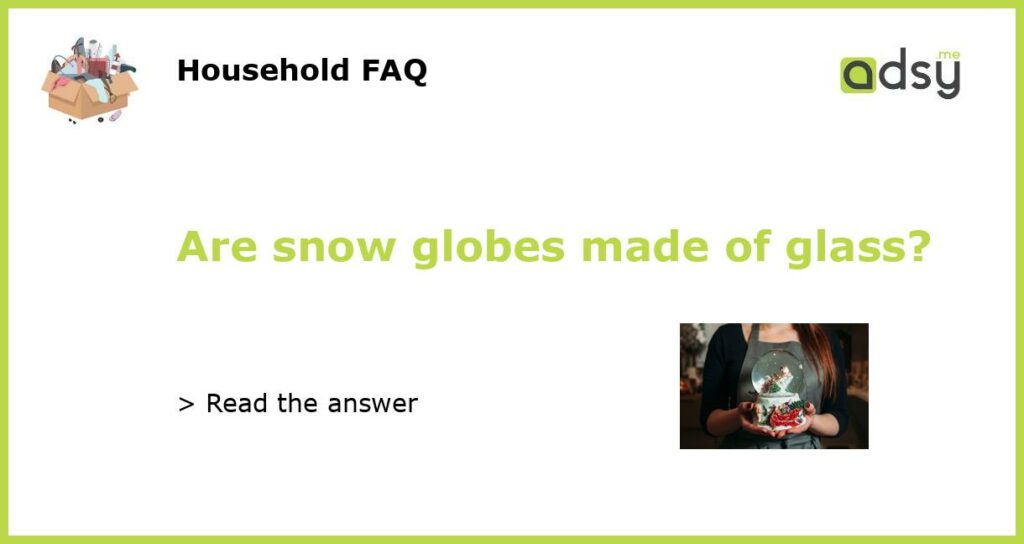Yes, snow globes are typically made of glass
Snow globes are popular decorative items that contain a miniature scene within a glass globe filled with water and glitter. The glass globe is an important component of the snow globe, as it is responsible for creating the visual effect of falling snow when the globe is shaken. Glass is the most commonly used material for making snow globes due to its clarity and ability to withstand the water and shaking involved in the snow globe’s operation.
The history of glass snow globes
The first snow globe, also known as a “water dome,” is said to have been invented in the late 19th century by a Frenchman named Emile Berliner-Muno. However, the concept of a glass dome enclosing a miniature scene was inspired by the traditional practice of using glass paperweights to display small objects. These early snow globes were often handcrafted, with the glass globe serving as both a protective casing for the scene inside and a medium for the falling “snow.”
How are glass snow globes made?
The process of making a glass snow globe involves several steps. First, the glass globe is blown or molded into the desired shape and size. The bottom of the globe is typically left open during this stage. Next, the miniature scene, which can be anything from a cityscape to a holiday-themed display, is carefully crafted and placed inside the globe. This scene is often made from materials such as resin or plastic. Once the scene is in place, a mixture of water and glitter is added to the globe, along with any additional decorations.
Advantages of glass snow globes
There are several advantages to using glass as the primary material for snow globes. Firstly, glass provides excellent clarity, allowing the viewer to see the scene inside the globe in great detail. Glass is also a durable material that can withstand the test of time. Unlike other materials, such as plastic, glass does not degrade or become discolored over time. Lastly, glass is a non-porous material, making it ideal for holding water and preventing any leakage or evaporation of the liquid inside the snow globe.
Alternative materials for snow globes
Although glass is the most commonly used material for snow globes, there are alternative materials that can be used as well. Some snow globes are made with plastic globes instead of glass, which can be more cost-effective and lightweight. Additionally, there are novelty snow globes that are made with materials such as acrylic or even metal. These alternative materials can give snow globes a unique look and feel, but they may not offer the same level of clarity and durability as glass snow globes.






